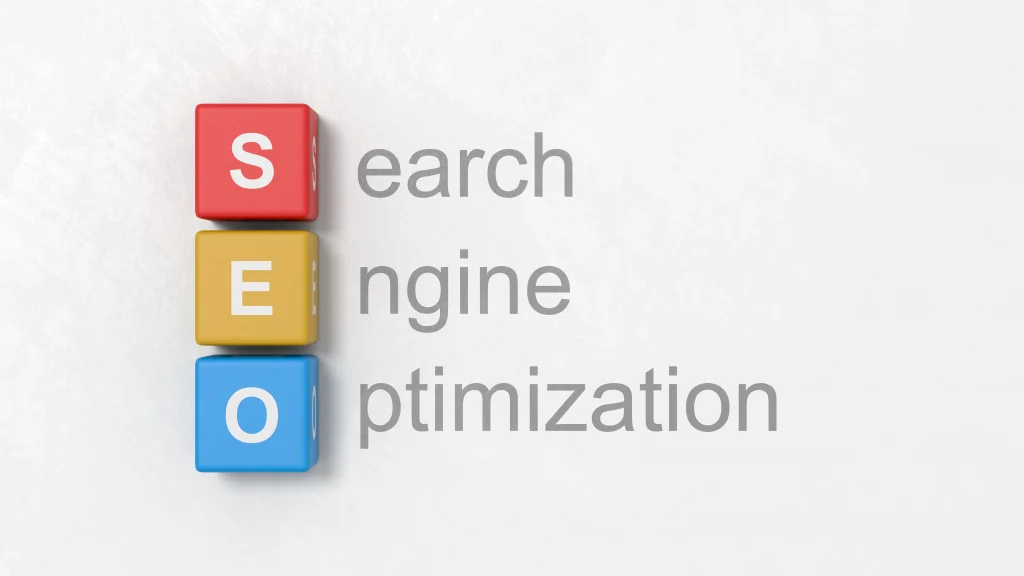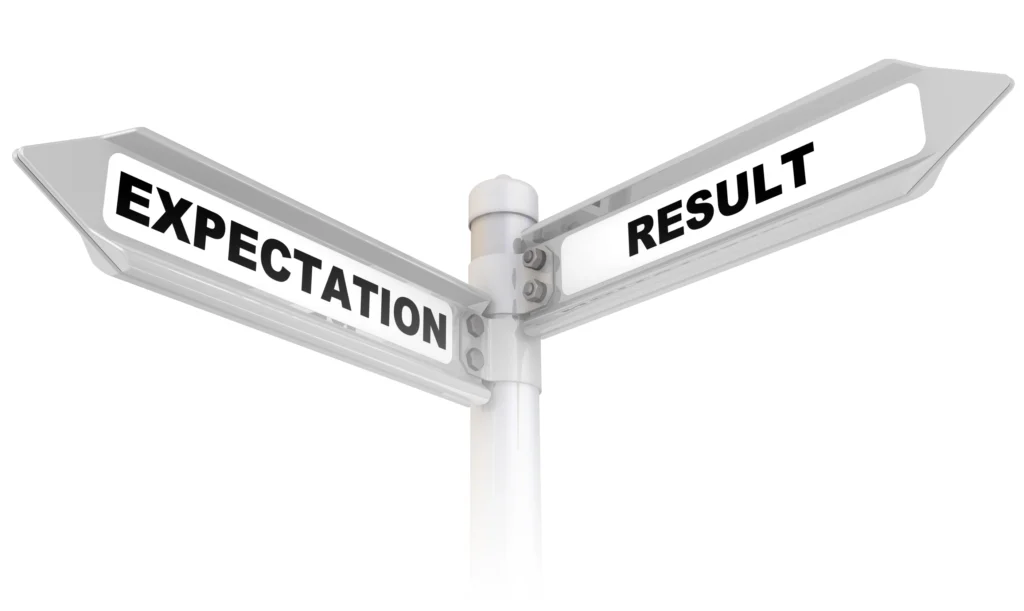SEO takes time however it brings an excellent ROI!
A frequent problem faced by companies taking on SEO work or engaging external SEO experts, is the mismatch between their anticipated outcomes and the actual timeframes for SEO results.
SEO takes time and dedicated attention but if done correctly it will bring a substantial ROI in the long-run.
What does SEO mean?
SEO stands for “search engine optimization” and focuses on unpaid (organic) search results. This methodology seeks to improve both the quantity and the quality of traffic to a website. It also aims to enhance brand visibility.

Beyond the technical aspect, SEO is deeply rooted in the human element. SEO revolves around grasping the nature of what individuals are searching for online, the types of questions they need answers to, the language they use in their queries, and the content they prefer to engage with.
The significance of SEO
While various online platforms and paid advertisements can attract visitors to websites, search engines remain the primary facilitator of web traffic.
Organic search results command a larger share of online visibility, are deemed more trustworthy by informed users, and attract significantly more clicks than paid ads. For instance, in the US, less than 3% of searchers click on sponsored advertisements.
To put it simply: SEO offers up to 20 times more traffic opportunities than pay-per-click (PPC) on both mobile and desktop platforms.
Moreover, SEO stands out as one of the few online marketing strategies that, when implemented effectively, can yield enduring benefits. A high-quality piece of content that ranks for the right keywords can lead to an exponential increase in traffic over time, unlike advertising, which requires ongoing investment to maintain web traffic.
The meaning of SEO outcomes
When initiating an SEO strategy, setting clear objectives is paramount, with revenue generation often being a primary goal.
While SEO can influence various aspects, including revenue generation, let’s focus on a singular key performance indicator: Organic Traffic.
Thus, when discussing the timeline for observing SEO outcomes, I’m referring to a noticeable increase in organic traffic, as it has traditionally been the yardstick for SEO success.

Certainly, the goal is to have organic traffic lead to increased revenue. Fortunately, when SEO successfully attracts the right audience, it can significantly boost a website’s revenue.
However, a variety of factors, including some that fall outside the scope of SEO, can influence a website’s ability to convert visitors into customers. These include factors like pricing strategies and the sales process.
This leads to a conclusion that website traffic is the foremost signal of a functioning SEO strategy.
How long does SEO take?
SEO is an ever-evolving space and the SEO needs are never the same for two different websites. Doing SEO consistently and monitoring SEO working progress helps in understanding how long it takes for SEO to take effect.
The time frame for SEO to show results, such as increased organic traffic, leads, or sales, typically spans from three to six months. However, it can also extend to a year in certain instances. SEO is a long-term process that requires ongoing commitment and patience to achieve noticeable progress in search rankings and web traffic.
The time it takes for SEO to be effective varies based on several site-related factors. Included are its ability to be crawled, the strength of its backlink profile, and the competitiveness of the desired keyword.

The extensive time required can be attributed to the fact that search engine algorithms are influenced by over 200 ranking factors, with major ones such as backlink profiles taking time to develop.
If you’re looking for fast SEO results, it’s crucial to set realistic expectations and understand that SEO result timelines can vary greatly.
Practically, once you get started with SEO, you are never going to stop because both your existing business rivals and new industry players will constantly try to steal your position on Google.
Why does SEO take time?
SEO is a methodical process rather than a quick fix. It involves a cycle of content creation, refinement, and distribution, influenced by the evolving complexity of search algorithms and the competitive online environment.
Complex algorithms
SEO’s time-consuming nature is attributable to its evolution from simple keyword and backlink strategies to complex algorithms. These algorithms are not public and constantly change, necessitating ongoing learning and strategy refinement. Achieving high rankings requires surpassing competitors in relevance, quality, usability, and providing a superior user experience.

Thus the extended time SEO takes is primarily due to the vast number of ranking factors that drive search engine algorithms. Among these, significant factors, like backlink profiles, take time to mature.
Key areas to master
SEO is not synonymous with paid advertising; there’s no direct payment route to achieve a presence in Google’s organic search listings.
Securing the top position for a specific keyword entail proving to Google that your content is the most pertinent and valuable among all competitors, requiring excellence across several key areas:
- Relevance: Does your page resonate with the intent behind the user’s search query? How well does your page meet the needs of search queries compared to others?
- User Experience: Is your site accessible and easy to navigate, providing a seamless reading experience? Can your site provide a superior user experience compared to others?
- Quality: Does your content stand out by being informative, engaging, or thought-provoking? Does your content surpass competitors in terms of usefulness and reliability?
- Originality: Does your content offer something new, such as unique insights or original research?
- Expertise: Was your content crafted by someone with a deep understanding or practical experience in the subject matter?
Investing considerable time and resources is necessary to excel in these aspects.
Long term approach
SEO’s incremental results emerge more slowly than the immediate traffic spikes provided by other forms of digital marketing due to its requirement for sustained effort and regularity.
The process that Google employs to find, index, and rank new or refreshed content takes time and is not subject to direct influence.
The application of SEO methodologies across a website and the continual addition of fresh content is a time-intensive process. Making incremental changes helps to build a website’s trustworthiness with Google, encompassing the cycles of content creation, refinement, and distribution.

Factors affecting how long time SEO takes
Website history
The history of your website is a significant factor in the speed of seeing SEO results. Typically, new domains may experience slower SEO progress compared to those that have been established for over a year.
Google’s John Mueller has indicated that ranking volatility is more pronounced during a website’s first year, a period when algorithms are still determining the appropriate search result placement for the site.
Well-established sites usually have the advantage of accrued authority, rankings, and backlinks, which all bolster their SEO efforts.
However, a longstanding web presence does not guarantee a quick SEO impact due to potential search engine penalties or the need to adapt to algorithmic changes. An older site might be grappling with past SEO errors, such as being impacted by a Google penalty It might also possess a large quantity of low-quality backlinks, which could delay the realization of SEO benefits.
Competition
You need to take the competition in your industry or business in consideration when optimizing your website for search engines. The competitiveness of your market segment can significantly extend the time needed to see SEO success.

Increased competition typically means it will take more time to achieve a top position in search engine results pages (SERPs).
If you’re targeting keywords that are also the focus of your competitors’ SEO efforts, and these competitors are robust, expect a longer journey to the top of the rankings.
Keyword targeting
Keywords are essential for achieving visibility in online searches relevant to your content. It’s crucial to carefully select keywords considering factors like search volume, length, popularity, and user intent.
Inaccurate keyword selection can undo your efforts and negatively impact your SEO performance.
Leverage tools such as Google Trends and the Google Keyword Planner for efficient keyword discovery.
When incorporating keywords into your content, ensure they enhance the text naturally rather than disrupt it with overuse.

The design of your website and the organization of its URLs are key elements in its optimization for search engines such as Google.
For example, if navigating your website’s various landing pages is a challenge for users, or they encounter a 404 error due to a malfunctioning link, then the site is not meeting user-friendly standards.
Google prioritizes sites that ensure a seamless user experience. When you get technical SEO right and consistently post high-quality content, you generally won’t have to wait long to see the benefits of SEO.
Crawlability and indexability
If search engines are unable to crawl or index a site, significant delays in SEO results can be expected. Being able to be crawled and indexed are essential prerequisites for appearing in search results.
A site must be crawled before it can be included in a search engine’s index. Issues with crawlability can be swiftly diagnosed and resolved with tools like Google Search Console.

However, even with crawlability and indexability ensured, other elements must be considered, including:
- Settings for crawl rate
- Schedules for updating XML sitemaps
- Optimization of internal linking
- Frequency of crawling
Enhancing one’s understanding of technical SEO can facilitate improvements in these aspects of a website.
Backlink profile
Link building is one of the major search engine ranking factors and the quality of your backlink profile is a cornerstone of SEO.
For search engines, backlinks act as a vote of confidence for content, similar to citations in scholarly articles, which inspired the original concept of backlinks as a ranking criterion.
Websites with robust backlink profiles often experience quicker SEO success because they are deemed more trustworthy.
On-page and off-page strategies
To improve your search engine visibility, attract more visitors, and enhance your ROI, you must implement tactics both on your website and externally. This means that on-page and off-page SEO tactics are both vital.
On your site, ensure that you fine-tune your meta tags, headers, anchor texts, titles, descriptions, and image alt attributes. These elements are essential for on-page SEO success.
Regarding off-page SEO, concentrate on acquiring high-quality backlinks that the links originate from websites that attract real organic traffic. The most reliable way to gauge a website’s value is by verifying whether it receives traffic from Google.
Applying these strategies will bolster your SEO performance, both on-page and off-page.
Inbound links
Inbound links are crucial for SEO, but their impact on how quickly SEO results are observed depends on several nuanced factors.
The sheer number of inbound links is important, but the quality of these links is more crucial. A greater number of high-quality, relevant links can boost SEO efforts more so than a larger volume of poor-quality links from unrelated sites.
High-quality links are not only more beneficial for SEO but also more challenging to obtain, which makes it difficult for competitors to emulate such strategies.

These high-quality inbound links are also more sustainable over time, compared to those generated through automated processes.
The pace at which you acquire inbound links, along with the historical rate of acquisition, is also important. An abrupt increase can indicate potential manipulation of rankings.
Strategies that do not align with Google’s Search Essentials, particularly when resulting in a rapid increase in inbound links, could trigger a manual review and lead to sanctions.
Consistent link velocity—the pace at which links are earned—indicates healthy growth and adherence to Google’s guidelines. On the contrary, resorting to black hat techniques that Google disapproves of can lead to erratic link growth patterns, jeopardizing your SEO progress.
Content
A strong content strategy that delivers value to visitors is essential. Beyond creation, it’s about managing and periodically updating content to keep up with Google’s evolving algorithms and guidelines.
The content on your website contributes to the speed of improving your SEO results. The primary takeaway is the huge importance of quality.
There’s a misconception that you should release new content gradually. This is based on the belief that a rapid deployment of content may appear suspicious to Google and potentially damage your rankings.

While this notion may seem plausible, Google has explicitly dispelled this myth. If you possess high-quality content that is ready for release, from an SEO standpoint, there is no advantage in withholding it.
Publishing it promptly can accelerate its beneficial effect on your rankings. Delaying publication only makes your SEO take longer.
It is advised to stick to a regular content release timetable rather than sporadic bulk publishing for a couple of reasons:
- It signals to Google that your site is consistently updated, prompting more frequent visits by their crawlers, which can amplify your SEO progress.
- It encourages visitors to come back to your site more often, potentially boosting the user experience signals to Google and thus, expediting your SEO activities.
But there’s more to it than just churning out new content.
Trimming your content can also positively affect the duration of your SEO journey. The strategy lies in identifying content that should be retained, enhanced, or removed. The overarching goal is to craft original, valuable content that meets the needs of your audience and is consistently improved.
Moreover, high-calibre, extensive content generally garners more links than its lower-quality, brief counterparts.
Backlinko’s Brian Dean conducted an analysis of 912 million blog posts and found that long-form content secured on average 77% more links than shorter pieces. Therefore, content is not only crucial on its own but also influences your link-building efforts, essentially serving a dual purpose.
Core web vitals
Experiencing frustration with slow-loading websites or pages that shift while loading is common.
To improve user experience regarding page speed, Google introduced Core Web Vitals, focusing on:
- The time it takes for a page to become interactive
- The speed at which a page reacts to user input
- The time it takes for the largest content element to load within the viewable area
A poor performance in these areas can lead to less favourable SEO outcomes due to compromised user experience.
Addressing these issues can involve collaboration with SEO and web development professionals to enhance your website’s loading speed and interactive responsiveness.
Strategies to accelerate SEO outcome
Immediate returns from SEO shouldn’t be expected, and a lack of instant results is not uncommon. It’s important to persist with SEO efforts even if your website doesn’t rank immediately.
There are no quick solutions or unethical shortcuts, such as black-hat SEO tactics, that can speed up SEO success.
Establishing a trustworthy site filled with content that satisfies user needs, while also following the SEO best practices recommended by search engines, can lead to faster SEO improvements.

This approach is particularly effective when compared to the slow progress of a brand-new website that lacks an online presence.
In the following is a range of approaches you can take in order to boost SEO results.
Target low-competition keywords
To gain rankings more swiftly, targeting less competitive keywords is a smart move.
Keywords that are easier to rank for due to lower competition are known as low-difficulty keywords. Focusing on these keywords instead of ones with higher competition can lead to quicker visibility in search results.
However, there is no point in ranking for keywords no one is searching for.
Perform keyword research to identify low-competition keywords that still boast a reasonable search volume and focus on those. This might include geographically specific or niche product keywords with commercial potential.
Address technical issues
Technical glitches can significantly hinder your SEO efforts, leading to both search engines and users bypassing your site. Therefore, it’s crucial to conduct a technical SEO audit promptly. You need to address issues such as duplicate content, canonical tags, structured data, XML sitemaps, and hreflang tags.

Resolving these problems can notably enhance your site’s architecture, yielding positive SEO results in a matter of weeks.
Continuous monitoring and fixing are also vital.
Optimize for featured snippets
Featured snippets provide quick answers from web pages that are within the top 10 search results on Google. Securing these snippets can catapult your page to the forefront of Google search results.
Boost pages using internal links
Links that connect different pages within the same website are known as internal links. They are instrumental in distributing PageRank and can elevate the ranking of a page.

Ensure pages are indexable
A page that isn’t indexable won’t show up in search engine results pages (SERPs). It’s important to check that no-index tags haven’t been mistakenly applied to any crucial pages.
Update or delete non-beneficial content
Revitalize pages that are not ranking well, have declining search traffic, or contain outdated information by updating their content.
Google advises that removing content that doesn’t add value could enhance the performance of your remaining content.
Content that doesn’t satisfy user expectations, whether due to substandard writing, lack of thoroughness, or inaccuracies, is considered non-beneficial.
Conduct a content audit to spot such content. Then, decide whether to:
- Remove: If the content is underperforming and unlikely to improve, removing it may be the most advantageous course of action.
- Consolidate: If there are multiple pages on the same topic, think about merging them into a single, more comprehensive resource and setting up the appropriate redirects.
- Upgrade: If the content has the potential to attract considerable traffic and drive conversions, invest in enhancing it.
When taking these steps, always consider the balance between the resources required and the anticipated rewards.
Generate attractive and link-worthy content
Developing content that is valuable enough to earn backlinks is key. Consistency in your content publication schedule serves a dual purpose:
- It signals to Google that your site is regularly updated.
- It encourages visitors to keep coming back, signifying a positive user experience.

Improve page load speed
A fast-loading page is highly favoured by both Google and users. To see quicker SEO results, pay attention to your site’s loading speed.
Utilize tools like Google Page Speed Insights or GTmetrix to measure your site’s performance on desktop and mobile. If your site is slow, identify and rectify the issues to enhance loading times.
Start SEO early
Given the competitive nature of SEO, immediate results are rare. To outpace competitors and secure your position for the future, initiate your SEO efforts as soon as possible. While SEO typically shows results within 3 to 6 months, starting early is essential for maintaining a competitive edge.

Persistence is key
SEO är som ett maratonlopp; det kommer att finnas tillfällen då framstegen känns statiska.
SEO is akin to a marathon; there will be times when progress seems stagnant.
It’s critical to stay the course. The level of competition in your field can extend the time required to achieve your SEO goals, but perseverance is always worthwhile.
Never lose sight of the long-term benefits.
Fix technical SEO shortcomings
Certain technical SEO issues can severely impede or even block a page from ranking. If a page isn’t properly crawled and indexed by Google, it won’t show up in search results.
Therefore, it’s essential to perform a technical SEO audit and address any critical issues promptly.
Managing expectations in SEO
A common issue with companies hiring SEO firms is having expectations that don’t align with the reality of SEO timelines. They are often influenced by overly optimistic claims from service providers.
Consequently, many are under the impression that SEO results can be seen in just a few weeks or months.

It’s possible to notice some upward movement in search rankings and traffic for less competitive keywords relatively quickly. However, achieving significant progress in more contested areas can span from several months to over a year.
There are several cases where companies, including SEO agencies, have engaged in practices against Google’s Webmaster Guidelines to expedite ranking improvements. While such approaches might offer short-term gains, they typically result in penalties, setting you back further than when you began.
Conclusion
SEO is not a one-size-fits-all solution; each website has its own specific set of requirements for improving its search rankings. With Google’s constant updates to its search algorithms, it becomes nearly impossible to definitively answer the time required for achieving success with SEO.
The process of determining what your website specifically requires is critical to approximating the timeline for your SEO success. Nevertheless, keep in mind that this timeline will always remain an approximation rather than a precise figure.
Be prepared for a substantial investment of time, potentially several months to a year, to start seeing the fruits of your SEO work. Even then, reaching the top doesn’t mean the work is done.

The SEO milestones reached within the first several months to a year are just the beginning. Even upon achieving top rankings, the challenge doesn’t end. Continuous effort is required to maintain your position due to the ongoing competition from existing and new contenders.
By adhering to the strategies and measures outlined in this text you can expedite the realization of your SEO goals compared to not having a strategic plan in place.
Given that SEO is an ongoing process, expect continual improvements over time with a robust and adaptive strategy in place.
In essence, SEO is a continual process without a definitive endpoint.



